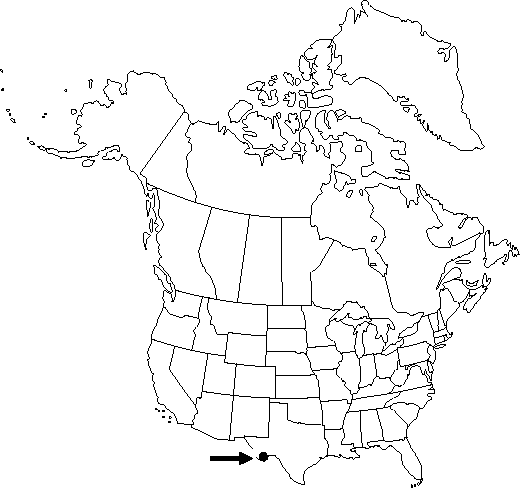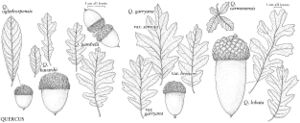Quercus carmenensis
Amer. Midl. Naturalist 18: 847. 1937.
Shrubs or trees, deciduous, shrubs 0.5-2 m, rhizomatous, trees (on better sites) to 12 m, trunk 0.75 m diam. Bark light gray, checkered or furrowed. Twigs often strikingly red, 1-1.5 mm diam., sparingly (rarely densely) stellate-pubescent, somewhat glabrescent and gray 2d year. Buds light brown, nearly round, 1-1.5 mm, indumentum similar to twigs. Leaves: petiole usually strikingly red, (2-)5-10 mm, ca. 1 mm diam. Leaf blade obovate or narrowly obovate, (20-)30-50 × 10-30 mm, thin to moderately leathery, base cuneate to rounded, margins shallowly and irregularly lobed or coarsely toothed in distal 1/2, rarely subentire, teeth mucronate, secondary veins 9-12 on each side, branching or passing directly to teeth, apex acute, sometimes broadly rounded; surfaces abaxially light green or yellow-green, prominently pubescent with minute, erect velvety hairs, adaxially surfaces dark green, sparsely and minutely stellate-pubescent. Acorns solitary or paired, subsessile or short-pedunculate (immature); cup (mature) unknown; scales (immature) light brown, tip acute, canescent. Nut unknown. Cotyledons unknown.
Habitat: Shrublands and woodlands on limestone
Elevation: 2200-2500 m
Distribution

Tex., Mexico (Coahuila).
Discussion
Of conservation concern.
Shrublands and woodlands on limestone; of conservation concern; 2200-2500 m; Tex.; Mexico (Coahuila).
Quercus carmenensis is known in the United States from only one collection from the Chisos Mountains, Texas; otherwise, it is known in the Sierra del Carmen region, Coahuila, Mexico.
Selected References
None.
